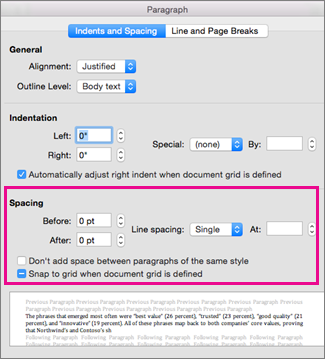

Press the keyboard shortcut you assigned to the command, check Space After again.ģ. Test the command: click in a paragraph, check the Space After in the Paragraphs dialog box. CLick in the "Press new shortcut key" box and press a key combination (suchĪs Alt+P) for calling the command. Select "All commands" from the list on the left search for IncreaseParagraphSpacing from the list on the right and select it. File/Options/Customize Ribbon/Customize Keyboard. That is not the case in Word 2010, so I don't know how anyone would expect you to be able to record a macro without doing some fancy research,ġ. Many years (and versions) ago, this command was near the top level and assigned a built-in keyboard shortcut. There is a command "Increase Paragraph Spacing" available in the Word application, but it's not exposed at the "top level" anymore. I'm not sure whether the instructions for your course were created with an older version of Word in mind. (And there would have been no need to record a macro at all.) You should now see that all Heading 1 paragraphs show the effects of the changed paragraph spacing. Right-click the Heading 1 entry in the Styles task pane and select the option to "Update Heading 1 to match selection". Select the Heading 1 paragraph to which you've applied the Space After formattingģ. Display the Styles task pane (dialog box launcher in the Styles group on the Ribbon)Ģ. The solution I'd be looking for would be:ġ. The reason is that this is not how styles If I were an instructor, and wanted to teach pupils how to use Word in an optimal manner, I would not be happy with the way you've interpreted the requirement (and I would have stated the requirement differently). Is this also supposed to be part of the macro? I'm also unsure as to how to interpret the second part of the requirement: ".and then apply to Heading 1 styles". There is one that changes Space Before, but that doesn't fit your requirement. I don't know of any other way to accomplish what you require as there is - as far as I can see - no independent command that changes Space After.

The way I'd accomplish changing only the Space After would be to delete all the other lines, leaving only the one that changes Space After. The macros you record will be listed here.Īnd here you will see, as you have analyzed, that the macro recorder really does record all settings in a particular dialog box in this case, the Paragraphs dialog box. You can see this by pressing Alt+F11, locating the "Normal" project in the "Explorer" window (by default, top left), then opening the "tree" (clicking the + signs) to Modules and finally, the "New Macros" entry. When you record a macro you are using VBA: the macro recorder writes VBA.


 0 kommentar(er)
0 kommentar(er)
